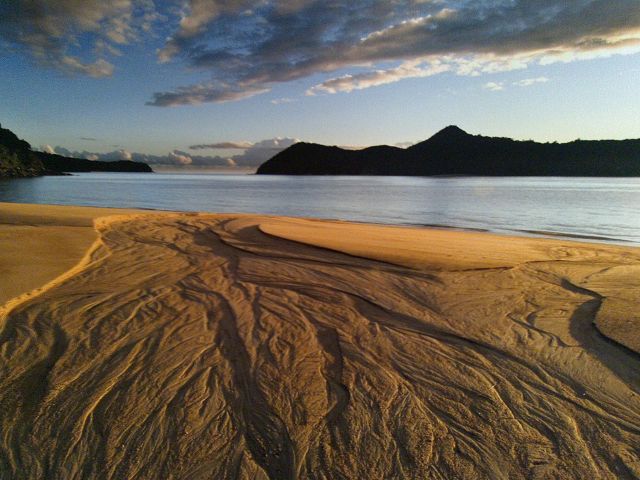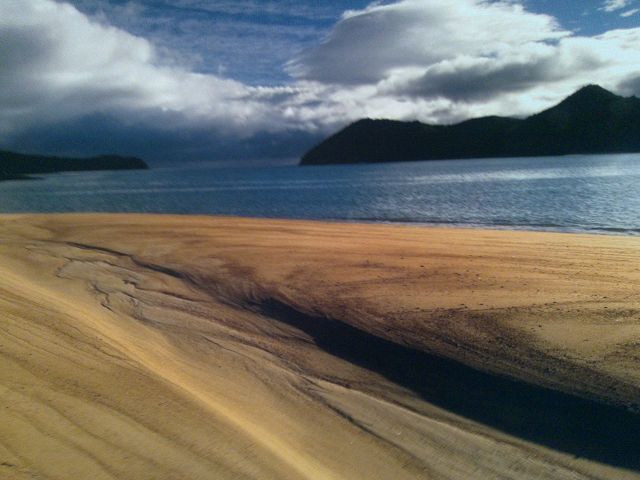Abel Tasman National Park is one of New Zealand’s most famous and stunning national parks, located on the South Island in the Tasman region. Known for its golden beaches, crystal-clear waters, lush native forests, and breathtaking coastal landscapes, it is a paradise for outdoor enthusiasts and nature lovers. The park is named after Abel Tasman, the Dutch explorer who was the first European to sight New Zealand in 1642.
Key Features of Abel Tasman National Park:
1. Geography and Landscape
- Coastal Beauty: Abel Tasman National Park is famous for its beautiful coastline, which includes golden sandy beaches, sheltered bays, and turquoise waters. The park is part of the Tasman Bay and stretches along the northern edge of the South Island, offering some of the most scenic beaches in New Zealand.
- Forest and Wildlife: The park is covered by temperate rainforest and native bush, including species like kanuka, manuka, and totara trees. The park's ecosystems are rich with New Zealand's unique flora and fauna. Visitors can enjoy walking through dense forests and coastal tracks.
- Tidal Inlets: The park features several tidal inlets, including Awaroa Inlet and Anchorage Bay, where the water level changes dramatically with the tides. These inlets are perfect for exploring by kayak or boat.
2. Abel Tasman Coast Track
- Great Walk: The Abel Tasman Coast Track is one of New Zealand’s Great Walks and is renowned for its incredible coastal views. The track stretches for about 60 kilometers (37 miles) from Marahau to Wainui. It can be completed in 3 to 5 days, but many people choose to do shorter sections of the track as day hikes.
- Accessibility: The track is well-maintained and suitable for all fitness levels, with options for staying in huts or camping along the way. The trail offers spectacular views of the coastline, beaches, and lush forests, and is often described as one of the most beautiful walks in New Zealand.
3. Wildlife
- Birdlife: Abel Tasman National Park is a sanctuary for many native New Zealand bird species. Some of the birds you may encounter include the tui, bellbird, kereru (native wood pigeon), and the fantail. The park is also home to the fiordland crested penguin and the south island kaka, both of which are endangered.
- Marine Life: The waters surrounding the park are rich with marine life, including seals, dolphins, and a variety of fish species. The park's marine reserve protects the delicate coastal ecosystems. Visitors may spot New Zealand fur seals sunbathing on rocks or dolphins playing in the bay.
- Turtles and Fish: The park is home to various fish species, and occasionally, you can spot sea turtles, especially around the more remote parts of the coastline.
4. Activities
- Hiking: Hiking is the most popular activity in Abel Tasman National Park, especially on the Abel Tasman Coast Track. Other walking trails are also available, allowing visitors to explore more remote parts of the park, such as Falls River or Canaan Downs. The park’s trails offer stunning views, wildlife encounters, and varied terrain, from beaches to forested areas.
- Kayaking: Kayaking is one of the best ways to explore the park’s coastline, offering access to secluded beaches, coves, and islands. Many tour operators offer guided kayaking trips through the clear, calm waters of Tasman Bay and around the park’s headlands. Sea kayaking allows visitors to get close to wildlife, including seals and dolphins.
- Swimming: The clear, warm waters of the Tasman Bay make the beaches in the park perfect for swimming. Popular beaches like Apple Tree Bay, Awaroa Bay, and Anchorage Bay have pristine golden sands and calm waters.
- Boating and Sailing: Exploring Abel Tasman by boat or sailing is another great way to see the park. You can take a water taxi to reach more remote beaches or even take a guided boat tour around the park’s coastline and islands. Stand-up paddleboarding is also a popular activity.
- Snorkeling and Diving: The park’s marine environment is excellent for snorkeling and diving. The waters are home to a wide variety of marine life, including fish, sea stars, and kelp forests. Many tour operators offer trips for both snorkeling and diving.
5. Accommodations
- Camping: Abel Tasman National Park offers several campsites along the coast and within the park, perfect for those who enjoy outdoor camping. Many of the campsites are located near beaches and have stunning views of the ocean. Some of the campsites are also located along the Abel Tasman Coast Track, making them accessible for hikers.
- Huts: There are several backcountry huts available along the Abel Tasman Coast Track, where hikers can stay overnight. These huts are basic but comfortable, providing shelter, cooking facilities, and toilet facilities. Bookings are essential during peak seasons.
- Luxury Lodges and Resorts: For those looking for a more luxurious experience, there are a number of eco-lodges and boutique accommodations near the park. Options like Awaroa Lodge offer comfortable stays with stunning views and eco-friendly practices.
- Water Taxis and Private Accommodation: Many visitors opt to stay at private accommodation outside the park, and water taxis can take them to and from various points within the park. This is a convenient way to explore the park without having to hike the entire track.
6. Best Time to Visit
- Summer (December to February): The summer months are the best time to visit Abel Tasman National Park, as the weather is warm and ideal for hiking, kayaking, and swimming. This is also when the park is busiest, so it’s important to book accommodation and tours in advance.
- Autumn (March to May): Autumn offers mild temperatures, fewer crowds, and beautiful fall colors. This is a wonderful time to enjoy the park’s outdoor activities and avoid the summer rush.
- Spring (September to November): Spring is a lovely time to visit, with mild weather and the chance to see native plants in bloom. There are fewer tourists, and the park is quieter.
- Winter (June to August): Winter is the least popular time to visit due to cooler temperatures and occasional rainfall. However, if you enjoy solitude and don’t mind the cooler conditions, you can still explore the park’s beauty, and accommodation is easier to book.
7. Conservation and Environmental Significance
- Protected Area: Abel Tasman National Park is a protected area, managed by Department of Conservation (DOC). The park’s ecosystems are preserved to ensure the protection of its native wildlife, including rare bird species and marine life.
- Marine Reserve: The waters surrounding Abel Tasman are designated as a marine reserve, meaning that marine life is protected, and fishing is restricted in certain areas. This helps maintain the health of the marine ecosystems in the region.
Conclusion:
Abel Tasman National Park is a must-visit destination for those looking to experience New Zealand’s coastal beauty and natural diversity. With its golden beaches, clear waters, lush forests, and opportunities for hiking, kayaking, and wildlife watching, the park offers something for everyone. Whether you’re trekking the famous Abel Tasman Coast Track, enjoying a relaxing day on the beach, or exploring the marine reserve, the park provides an unforgettable adventure in one of the most stunning natural environments in New Zealand.






